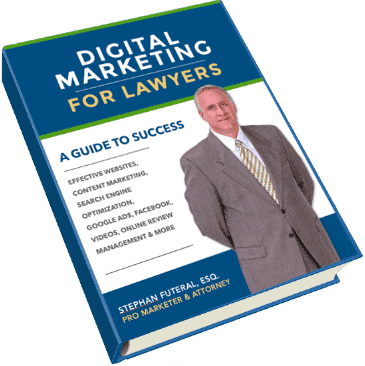In the ever-evolving landscape of legal digital marketing, content is king. Content marketing has become an indispensable part of a successful online legal marketing strategy. However, creating compelling legal content that not only attracts but also converts your potential clients can be a daunting task. In this comprehensive guide, we will delve into the world of legal content marketing strategies and explore the fundamental principles and techniques to create content that engages your audience and drives conversions.
The Power of Content Marketing Strategies
Before we dive into the strategies for creating compelling legal content, it’s essential to understand the profound impact content marketing has had on the digital landscape. Content marketing strategies involve creating and distributing valuable, relevant, consistent content to attract and engage a specific target audience. This content can take various forms, including blog posts, videos, infographics, social media updates, podcasts, and more.
The power of content marketing strategies lies in its ability to:
- Attract and Retain Audiences: High-quality, relevant content draws in users and keeps them engaged. It’s an effective way to capture your target audience’s attention and keep them returning for more.
- Build Authority: By consistently providing valuable content, you can establish your law firm as an authority in your area. This will boost your credibility and trustworthiness, which are crucial for conversions.
- Enhance SEO: Quality content can help improve your website’s search engine ranking, making it easier for potential clients to find you.
- Educate and Inform: Content marketing lets you educate your audience about your services and industry. Informed clients are more likely to convert.
- Foster Relationships: Engaging content fosters a sense of community and connection with your audience, making them more likely to convert and become loyal.
Now that we’ve established the importance of content marketing let’s delve into the strategies for creating compelling legal content that converts.
Understanding Your Audience
The foundation of successful content marketing strategies is a deep understanding of your target audience. To create legal content that converts, you need to know who your audience is, their pain points, and what motivates them. Here are some steps to help you understand your audience better:
1. Create Detailed Client Personas: Client personas are semi-fictional representations of your ideal clients. They include demographic information, behaviors, motivations, and pain points. Creating client personas allows you to tailor your content to address your target audience’s needs and desires.
2. Conduct Market Research: Market research involves studying your competitors, industry trends, and customer behavior. It can help you identify market gaps and develop content that addresses them.
3. Analyze Existing Data: If you have an existing client base, analyze data from your website, social media, and email marketing campaigns. This data can provide insights into what type of content resonates with your audience.
Understanding your audience is an ongoing process. Update your client personas regularly and adapt your content strategy to reflect changes in your audience’s preferences and behaviors.
Crafting High-Quality Content
Compelling content that converts is characterized by its quality. It should be informative, engaging, and relevant to your audience. Here are some strategies for crafting high-quality legal content:
4. Deliver Value: Your content should solve a problem, answer a question, or provide valuable insights to your audience. Consider what your target audience needs and create content that meets those needs.
5. Focus on Originality: Original content sets you apart from competitors. Avoid duplicating existing content and aim to provide a unique perspective or fresh insights on a topic.
6. Maintain Consistency: Consistency in content creation is essential for building trust and brand recognition. Set a regular posting schedule, whether daily, weekly, or monthly, and stick to it.
7. Use High-Quality Visuals: Visual content, such as images, infographics, and videos, can significantly enhance the appeal of your content. Ensure that these visuals are high-quality and relevant to the topic.
8. Keep It Readable: Use clear and concise language. Break up long paragraphs with subheadings, bullet points, and lists to make your content easy to scan and digest.
9. Invest in Editing and Proofreading: Errors in your content can harm your credibility. Invest time editing and proofreading your content to ensure it is error-free and flows smoothly.
Content Types and Formats
Diversifying the types and formats of your content can help you reach a broader audience and keep your existing audience engaged. Here are some content types and formats to consider:
10. Blog Posts: Blogging remains one of the most popular forms of content marketing strategies. Blog posts can inform, educate, and entertain your audience. They are also an excellent way to improve your website’s SEO.
11. Videos: Video content has experienced explosive growth in recent years. Consider creating how-to videos, demonstrations, interviews, or vlogs to engage your audience.
12. Infographics: Infographics are visually appealing and can convey complex information in a digestible format. They are highly shareable on social media.
13. Podcasts: Podcasts are an excellent way to reach an audience on the go. They allow for in-depth discussions and interviews on various legal topics.
14. Ebooks and Whitepapers: Ebooks and whitepapers are long-form content pieces that provide in-depth information. They are often used as lead magnets to capture email addresses for further marketing.
15. Social Media Updates: Leverage the power of social media to share bite-sized content and updates and engage with your audience on a more personal level. Diversifying your content can help you cater to your target audience’s preferences.
Storytelling
Storytelling is a powerful technique to make your content more compelling and relatable. People connect with stories on a deep emotional level. Here’s how you can incorporate storytelling into your legal content marketing strategies:
16. Identify Your Brand Story: What’s your brand’s origin story? What values and mission drive your company? Sharing your brand story can create a personal connection with your audience.
17. User Stories and Testimonials: Share real-life success stories and testimonials from your clients. This not only provides social proof but also humanizes your brand.
18. Case Studies: Create in-depth case studies that showcase how your services have solved specific client problems. Case studies provide concrete examples of the value you offer.
19. Visual Storytelling: Use visuals to enhance your storytelling. This can include images, videos, and even animations that help convey your message more effectively.
Remember that storytelling doesn’t have to be limited to written content. It can be woven into videos, infographics, and other formats to create a more immersive and engaging experience for your audience.
SEO and Content Optimization
Creating fantastic content is just one piece of the puzzle. You also need to ensure that your content is discoverable. Search Engine Optimization (SEO) is crucial for getting your legal content in front of your target audience. Here are some tips for optimizing your content:
20. Keyword Research: Identify relevant keywords that your target audience is searching for. Use tools like Google Keyword Planner or Ahrefs to find high-traffic, low-competition keywords.
21. On-Page SEO: Optimize your legal content for search engines by using your target keywords in the title, headings, meta descriptions, and throughout the content. Ensure your website is technically sound, with fast loading times and mobile optimization.
22. High-Quality Backlinks: Quality backlinks from authoritative websites can boost your content’s visibility. Reach out to industry influencers or other websites to request backlinks.
23. Content Promotion: Don’t rely solely on organic traffic. Promote your content through various channels, including email marketing, social media, and paid advertising.
24. Regularly Update Old Content: Outdated content can hurt your SEO efforts. Periodically revisit and update older content to keep it relevant and valuable.
Personalization
Personalized legal content can significantly increase conversion rates. Tailor your content to individual users based on their preferences, behavior, and demographics. Here’s how to implement personalization:
25. User Data Analysis: Leverage data collected from user interactions on your website and other channels to create personalized content recommendations. This can include product recommendations, content suggestions, and email content.
26. Dynamic Content: Use dynamic website content and emails to tailor the user experience. For example, show different content to first-time visitors, or repeat clients.
27. Segmented Email Campaigns: Segment your email list into different groups based on user behavior and preferences. Send targeted emails with content that matches each segment’s interests.
28. A/B testing: Continuously test different content variations to see what resonates most with your audience. A/B testing can help you refine your personalization efforts.
Personalization increases the relevance of your content and enhances the user experience, leading to higher conversion rates.
Call to Action (CTA)
A compelling CTA is the bridge between your content and conversion. Your content should guide the user toward the desired action. Here’s how to create effective CTAs:
29. Clarity and Urgency: CTAs should be clear and concise and create a sense of urgency. Use action-oriented words like “schedule free consultation,” “subscribe today,” or “call now.”
30. Placement: Strategically place CTAs within your content. They should be easily visible and naturally flow within the content.
31. Use A/B Testing: Experiment with different CTAs to see which ones yield the highest conversion rates. Test variations in color, text, and placement.
32. Match the CTA to the Content: The CTA should be relevant to the content. The CTA should direct users to learn more if the content is about a specific legal area.
33. Create Visual CTAs: Visual CTAs, such as buttons or banners, can stand out and attract more clicks. Ensure they are well-designed and easily distinguishable.
Content marketing is a dynamic and ever-evolving field. To create compelling content that converts, you must continuously adapt and refine your strategies. Understanding your audience, crafting high-quality content, optimizing for SEO, personalizing content, building trust, and leveraging analytics are critical pillars of successful legal content marketing strategies.


